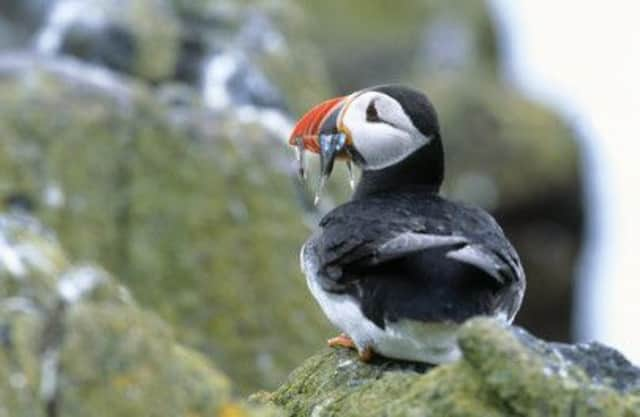Isle of May courses to protect Scottish seabirds


• Bird watchers will be given the chance to learn different tracking techniques
• The revamp will improve official records on key species like puffins
Advertisement
Hide AdAdvertisement
Hide Ad• RSPB Scotland said accurate data collection was “vital” to ensure the survival of seabirds.
The Isle of May Bird Observatory in the Firth of Forth has just completed a major revamp creating modern facilities for dozens of volunteers who come each season to assist experts monitoring the wildlife.
Birdwatching enthusiasts will also be offered the chance to learn different tracking techniques such as ringing at the observatory to improve official records on key species including globally significant populations of puffins which come to the island each year to breed.
The courses, which are due to start next season, were welcomed by RSPB Scotland which said accurate data collection was “vital” to ensure the survival of under-threat seabirds.
Stuart Rivers, spokesman for the Isle of May Bird Observatory and Field Station Trust, said: “A key focus when we first launched the fundraising appeal for the refurbishment for our 75th anniversary was to increase our educational work. We plan to start short courses from next year where small groups of interested people can learn to do ringing of birds, for example, in the observatory lounge, which used to double as a bedroom.
“At the moment we give preference to bookings from groups of volunteers which include someone who already have a licence for ringing birds. The courses should really help with conservation data collection.”
The observatory was founded in 1934 in an old, listed lighthouse on the island by a group of young Scottish ornithologists and has continued to depend on the enthusiasm of amateur birdwatchers ever since.
Volunteers visit each year between March and November, with most groups staying for a week at a time. Until now they have had to make do with an outdoor, chemical toilet and rundown accommodation.
Advertisement
Hide AdAdvertisement
Hide AdThanks to the refurbishment the observatory now has an indoor, flushing toilet and three purpose-built bedrooms, each with a double bunk and a single bed.
Welcoming the observatory’s new educational programme, Doug Gilbert, RSPB Scotland’s head of reserves ecology, said: “We are delighted to hear that the Isle of May Observatory is planning to offer training to people in monitoring seabirds.
“This comes at a time when many seabirds including puffins and kittiwakes are under all sorts of pressure from climate change, pollution incidents and inappropriate developments so understanding how many seabirds we have and how well they are doing is vital.
“We are on the countdown to 2015 when we hope the next seabird census of the whole of the UK and Ireland will take place so the more people who are trained to count seabirds the better.”
Puffins and kittiwakes are among a number of internationally important populations of breeding seabirds on the island, which is one of Scotland’s most remote and environmentally sensitive national nature reserves.
Scottish Natural Heritage, which owns and manages the reserve, is currently demolishing its visitor centre and building a new one for the 9,000 people each year who visit the island to see birds and seals, which also breed there.
Specialist construction engineering firm Hatrick Bruce likened the ongoing project to a “military operation” with work severely restricted by tides, wind direction and breeding seasons as staff ensure wildlife is not disturbed.